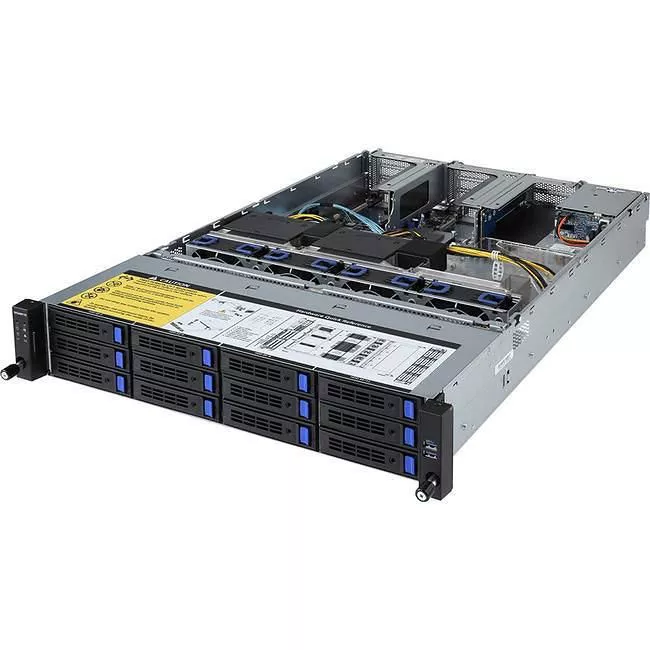GIGABYTE R281-3C2 Barebone - 2U Rackmount - 2x LGA-3647 - Intel C621 Chipset - 2x GPU
SabrePC B2B Account Services
Save instantly and shop with assurance knowing that you have a dedicated account team a phone call or email away to help answer any of your questions with a B2B account.
- Business-Only Pricing
- Personalized Quotes
- Fast Delivery
- Products and Support

GIGABYTE R281-3C2 Barebone - 2U Rackmount - 2x LGA-3647 - Intel C621 Chipset - 2x GPU
- Supports up to 2 x double slot GPU cards
- NVIDIA® validated GPU platform; Supports for NVIDIA® Tesla® GPUs
- 2nd Gen. Intel® Xeon® Scalable and Intel® Xeon® Scalable Processors
- 6-Channel RDIMM/LRDIMM DDR4, 24 x DIMMs
- Supports Intel® Optane™ DC Persistent Memory
- Dual 1Gb/s LAN ports (Intel® I350-AM2)
- 1 x Dedicated management port
- 12 x 3.5 or 2 x 2.5 SATAIII hot-swappable HDD/SSD bays
- 8 x PCIe Gen3 expansion slots
- 2 x OCP Gen3 x16 mezzanine slots
- Aspeed® AST2500 remote management controller
- Dual 1200W 80 PLUS Platinum redundant power supply
2nd Generation Intel® Xeon® Scalable Family Ready
GIGABYTE's servers are fully ready to support the second generation of Intel® Xeon® Scalable Family processors, codenamed Cascade Lake, which bring the following major enhancements:
- Intel® Optane™ DC Persistent Memory: Built-in support for this revolutionary new product based on Intel's 3D Xpoint technology
- Overall Performance: Higher CPU frequencies, improved turbo profiles vs. prior-gen Intel Xeon Scalable processors
- Increased DDR4 Memory Speed & Capacity: Up to 2933MHz (1 DIMM per channel on some SKUs), 16Gb based DIMM supported
- Intel Deep Learning Boost: Significantly accelerates inference performance for deep learning workloads optimized to use VNNI (Vector Neural Network Instructions)
- Security: Hardware mitigations for Meltdown / Spectre security vulnerabilities
Intel® Xeon® Scalable Family Processors
GIGABYTE's Intel® Xeon® Scalable Processor family servers are available in dual socket configurations, and are compatible with the full family of different SKUs (Bronze, Silver, Gold and Platinum) that are workload optimized to support different applications, from enterprise IT database, cloud and storage to the most high-demand HPC workloads.
Advanced features built into the silicon include:
- Intel® QAT: Speed up data compression and cryptography with integrated Intel QuickAssist Technology (QAT).
- Intel® AVX-512: Intel Advanced Vector Extension 512 instruction set architecture enables workload-optimized performance and throughput increases for advanced analytics, high performance computing (HPC) applications, and data compression.
- Intel® VROC: Intel Xeon Scalable Processors come with built-in support for Intel VROC (Virtual RAID on CPU). And GIGABYTE Intel Xeon Scalable NVMe SKU servers all ship with an Intel VROC module as standard.
- Intel® Omni-Path: Selected GIGABYTE servers support CPU SKUs with integrated Intel Omni-Path Fabric connection
Intel® Optane™ DC Persistent Memory Ready
GIGABYTE's second generation Intel® Xeon® Scalable family servers come ready to support Intel Optane DC Persistent Memory, a revolutionary new product that re-defines traditional memory & storage architectures by enabling a large persistent memory tier between DRAM and SSDs, that's higher capacity than DRAM and faster than SSDs, enabling the user to bring more data closer to the CPU for faster time for insight.

